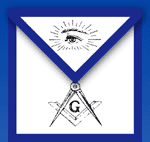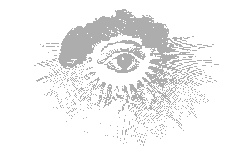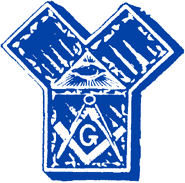| |
|
 |
|
Behind the ceremonies of all Masonic Degrees lies a fundamental conception of this world in which we live and man's place in it. It is based on the belief common to all religions and to almost all systems of philosophy that there exists somewhere a Supreme Being who created this world, and of whom all mankind are the instruments and servants. With the particular attributes of this Supreme Being, and the manner and form in which He should be worshiped, Masonry has no concern. It emphasizes three fundamental ideas; first, that God exists; second, hat men are put into this world to exercise their faculties and work as God's instruments; and third, that their work is to be performed in accordance with certain principles of morality and justice which are indicated by the laws of Nature and by revelation contained in the Sacred Writings. Freemasonry has no Sacred Book of its own. In our Jurisdiction it adopts the Bible as a symbol of all Sacred Books. The Masonic ritual has to do with the building of a great Temple. In the erection of this Temple, many workmen are engaged, divided into crafts according to their ability and skill and directed by overseers who are called masters and wardens. The work is proceeding according to the plan of a Great Architect. None of the masters or workmen know why the Temple is being built or what use is to be made of it after it is built. Nor do the master or the wardens or any of the workmen know the whole plan. The Architect furnishes only designs, drawn on a Trestle-Board, from which each craftsman is given the details he must know in order to carry out that part of the work which it is his duty to perform. The workmen merely know that each must work with all his heart and soul and strength and to the utmost of his ability and skill, because the Great Architect has ordered it so. Each understands that the successful completion of the work depends not only on his individual effort but also on the united cooperation and harmony of the Craft. Each understands also that there can be no cessation of the work until the Temple is completed, at which time the Great Architect has let it be known that the whole design will be disclosed as well as the object and purpose of its building. This is no fanciful picture designed for an evening's entertainment, but is intended to represent and does faithfully represent the life of man. He finds that in this world he must work if he is to receive the wages of life, which consist not merely of a "living": food, clothing, and shelter, but those equally essential satisfactions: interest in life, happiness, and contentment. He finds that he cannot choose the work he would like to do, but must adapt himself to conditions and circumstances imposed by a power outside himself. He gets his directions for doing his work from study of the forces and the laws that govern the natural world and from written words of wisdom embodied in what are known as Sacred Volumes, or Bibles. He finds that he cannot work alone, that his work is dependant on mankind and they on him, wherefore are formed governments, societies and other organizations for cooperative effort. He sees many things happen to himself and to others the reason for which he cannot fathom. At one time the world seems good, at another bad. Sometimes the work he is doing appears without purpose and without result. He continues to put forth effort only because he must. The ritual harmonizes these discordant impressions. The Temple that is being built is the Temple of character; the great books of nature and revelation are the Trestle-Board; the voice of conscience is the interpreter; man is the workman; and the Supreme Architect is God.
Contact
the Webmaster:
|



